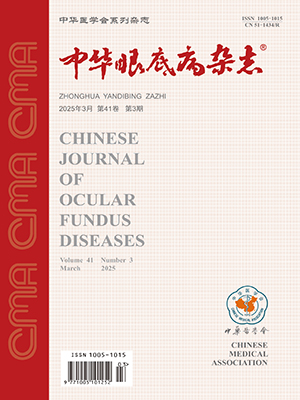Objective To review the distribution and shifting trends of cultured bacteria from the aqueous humor and the vitreous body. Methods A retrospective analysis on distribution of Gram′s stain, the distribution and change of isolates was performed in 522 specimens (aqueous humor,261 and vitreous body,261) of patients with suspected endophthalmitis during a 10-year period (1989-1998). Results The positive cultures were 119 (aqueous humor,44 and vitreous body,75) of 522 specimens. The average positive rate was 22.8%. Gram-positive cocci constituting 45.4%(54) of total isolates followed by Gram-negative bacilli,34.5%(41);Gram-positive bacilli, 20.2%(24). In the positive bacterial cultures, enterobacteriaceae was the most common isolate, 18.5%, and the next was micrococcus, 16.0%; coagulase-negative staphylococcus,12.6%; and pseudomonas,10.9%.Comparing the data from 1989 through 1993 with the data from 1994 through 1998, the frequency of Gram-positive cocci had no significant change, while the frequency of Gram-positive bacilli was decreased and the percentage of Gram′s-negative bacilli was increased. Conclusions Gram-positive cocci and Gram-negative bacilli are the predominant pathogens of bacterial endophthalmitis. The percentage of Gram′s-negative bacilli has increased for 5 years. It is very important to comprehend the distribution and shifting trends of these pathogenic bacteria for diagnosis, prevention and treatment of bacterial endophthalmitis. (Chin J Ocul Fundus Dis, 2002, 18: 104-105)
Citation: SUN Xuguang,WANG Zhiqun,LUO Shiyuen,et al. The clinical analysis on bacterial isolates from the aqueous humor and the vitreous body of patients with suspected endophthalmitis. Chinese Journal of Ocular Fundus Diseases, 2002, 18(2): 104-105. doi: Copy
Copyright © the editorial department of Chinese Journal of Ocular Fundus Diseases of West China Medical Publisher. All rights reserved




